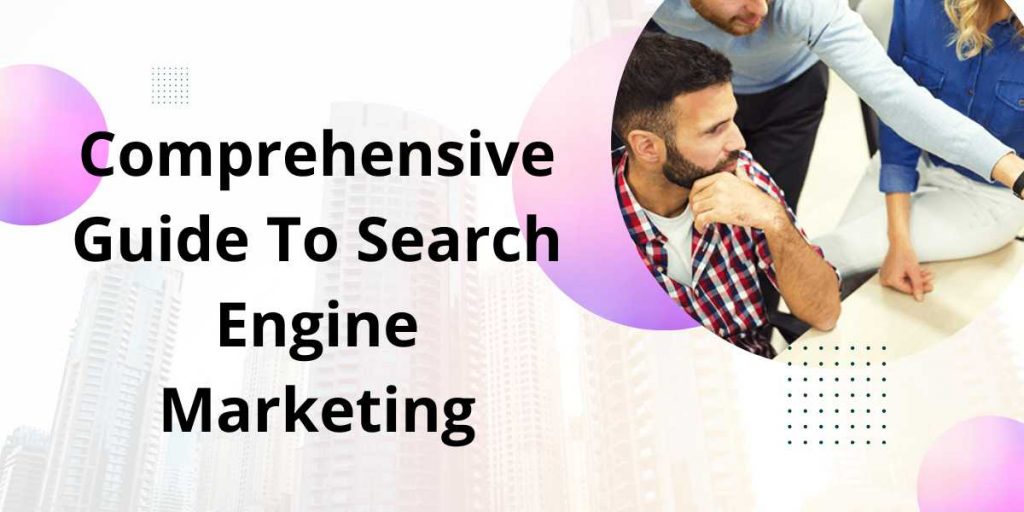A Comprehensive Guide To Search Engine Marketing

Search Engine Marketing (SEM) is one of the most effective ways to get your business out there. SEM can be used to generate leads and build a relationship with potential customers. But what is it, exactly, and how do you go about implementing it? In this blog post, we will provide a comprehensive guide to SEM that will help you understand everything you need to know in order to get started.
From keyword research to paid search campaigns, this guide has it all. So whether you’re new to SEM or have been working in it for years, read on for a comprehensive guide to the art of search engine marketing.
What is SEOM?
Search engine marketing (SEM) is the practice of using online search engines to improve the visibility of a company or product. SEM can be used to improve a company’s web presence, increase website traffic, and attract new customers. SEM can also be used to identify and target potential customers who are likely to be interested in a company’s products or services.
To effectively use SEM, companies must first understand how search engines work. Search engines index websites based on the terms that people type into Google, Yahoo!, and other search engines. When a person types in a term associated with your company or product, your website may appear as one of the results that the search engine displays.
Companies can use two primary methods to boost their website content and make it more visible to search engines: article marketing and link building.
- Articles are short pieces of content that discuss one specific topic. Articles can be written by company employees or hired third-party writers. Once an article is published on a company’s website, it can be indexed by Google and other search engines.
- Link building is the process of adding links from high-quality websites to your own website. Links help improve your site’s rank in Google and other search engines and make it more visible to potential customers.Links can be added manually or through automated programs such as Majestic SEO.
The Different Types of SEOM
There are a variety of search engine marketing techniques available to businesses today. Some popular methods include SEO, pay-per-click (PPC), and organic search. It can be tough to determine which method is best for your business, so this guide will outline the different types of search engine marketing and help you decide which is right for you.
SEO: Search engine optimization is the process of making your website appear in the search results pages of major online search engines. The goal is to improve your website’s position so that it ranks higher on SERPS (search engine result pages). There are various ways to achieve this ranking, including optimizing your website content, adding keywords to your site title and meta data, and using external links.
PPC: Pay-per-click (PPC) advertising is a paid method of promoting your website on Google Adwords or other pay-for-performance ad platforms. When a user clicks on an ad displayed on Google, Yahoo! or other major search engines, the advertiser pays Google based on how many visitors from that ad click through to the advertiser’s website.
Ads can also be clicked on by people who are not looking for what you have to offer but who happen to see your ad while they are browsing the web generally. Because ads are placed where users are most likely to see them – near the top of SERPs – PPC campaigns can be very effective at driving traffic to your site.

How to Setup an Effective SEO Campaign
Creating an effective search engine optimization (SEO) campaign can be a challenge, but with the right tips and strategies it can be an incredibly effective way to drive traffic to your website. Here are some tips for setting up an SEO campaign that will help you reach your goals:
- Before you can begin setting up an SEO campaign, you first need to assess how well your website is currently ranking in search engines. Use a tool like Google Analytics to track pageviews, organic clicks (clicks from people who found your site through organic traffic), and organic search engine traffic (traffic from Google and other major search engines). This information can help you determine where your website is performing well and where improvement may be necessary.
- Once you have an idea of where your website ranks and what needs improvement, it’s time to create a strategy for reaching those rankings. Start by identifying the keywords that are most relevant to your business and researching which techniques work best for ranking high for those keywords. Then implement those techniques on a dedicated area of your website (like your About Us page) and track the results. The key is to stay consistent with your SEO efforts; if you make tweaks or changes to your website without taking into account how these changes might affect your rankings, you’ll likely see negative results.
Tracking and Reporting Your SEOM Efforts
Whether you are a small business just starting out in search engine marketing (SEM) or an experienced marketer, tracking and reporting your SEM efforts are essential. By following a few basic principles, you can track your progress and measure the effectiveness of your campaigns.
- Before any SEM campaign can begin, it is important to develop achievable objectives. What do you want to achieve? Are you looking to improve traffic to your website? Increase leads? Improve brand Awareness? Once you know what you are after, it is easier to create measurable goals for each stage of your campaign.
- Once objectives have been set, it is important to track and monitor results regularly. This includes both short-term measurements such as daily or weekly CLICK-THROUGHS or leads generated, as well as long-term data that reflects changes over time in key areas such as Website Visits, Traffic Sources and Conversion Rates. Regular evaluation allows you to fine-tune your strategy as needed, while also gauging the impact of competitor activity on your own results. Remember–the best way to learn from past successes or failures is by constantly measuring progress!
If You Need To Get More Information Then Click The Below Link.




